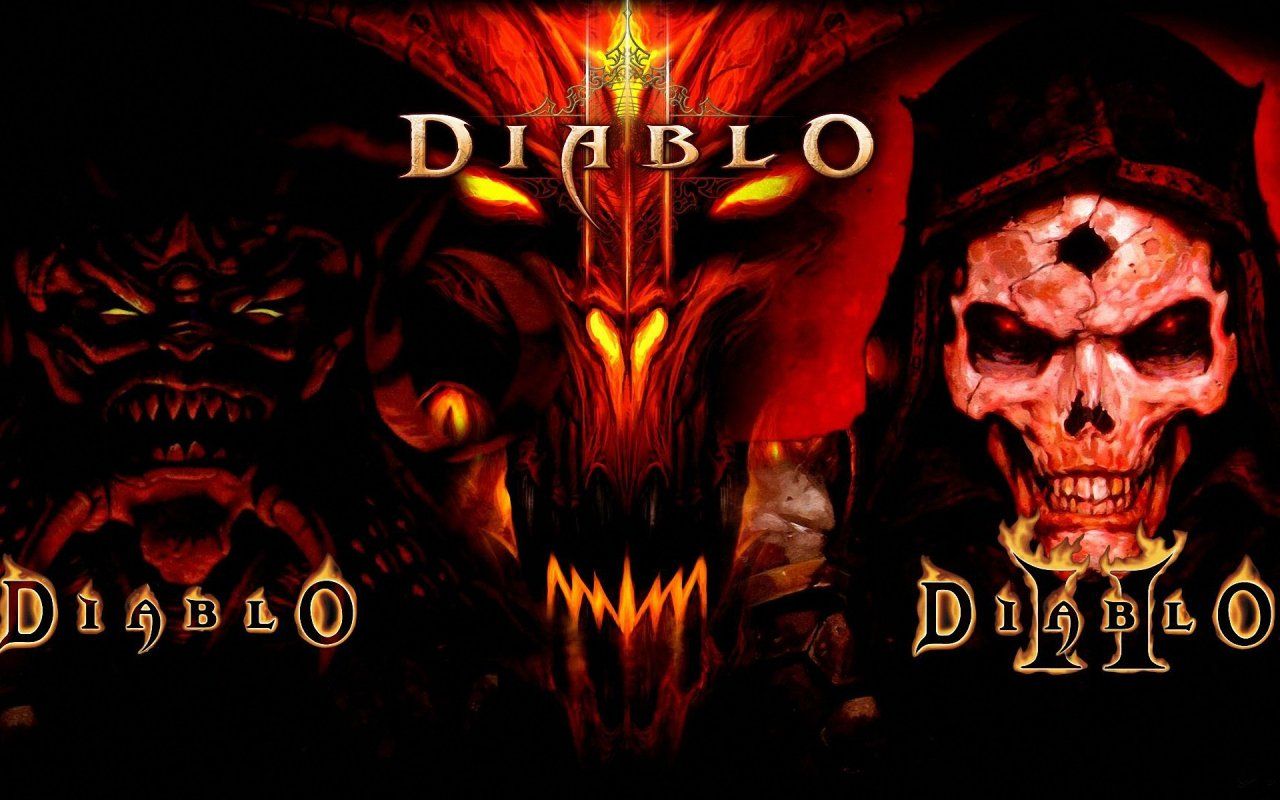Blizzard Entertainment has always been known as a relatively PC-focused game publisher, defining genres such as Real-Time Strategy with Warcraft and Starcraft and Action-RPGs with Diablo. And while back in the day they released StarCraft on the Nintendo 64 and Warcraft II on the Sony Playstation (among a few other small titles), the majority of their big titles have been focused on PC.
However, every mainline Diablo game from its debut in 1997 to the most recent title in 2023, has at some point or another received a console port. From cancelled handheld ports, to feature-exclusive versions, to subjectively better ways to play the game. Diablo has an interesting history of console ports and is a series that continues to benefit from the mandatory hardware and extended audience that consoles have to offer.
This article, while not exactly deep or news that couldn't be found with a little research, is intended to at least teach one or two interesting facts to new-comers to Diablo and act as a reminder of the fun and interesting past the series has lived on consoles over the years to Diablo veterans.
Diablo and Hellfire expansion
With the change from turn-based to real-time combat, and the last-minute inclusion of online multiplayer, Diablo was delayed into a January 1997 release. The game was a huge success and as a result, an expansion named Hellfire was developed by Synergistic Software and released in late 1997. The following year a Sony PlayStation version was commissioned, to be developed by Climax Studios and published by Electronic Arts. The PlayStation version was unique in that the character could be controlled directly via the controller D-pad, as opposed to ordered via point-and-click commands. While it didn't have online connectivity like its PC counterpart, it supported 2-play couch co-op - a first for the series, as was controller support.
After the successful release of Diablo 2, a small team began working on a Nintendo Gameboy port of the first game, internally named 'Diablo Junior'. A playable demo was produced between 2002 and 2003 that shows a crude and primitive version of the first game playing on the original Gameboy, this version at one point leaked online and can be played on emulators today. While development began on the original Gameboy, plans were to release it on either the Gameboy Color or Gameboy Advance. The project was cancelled a few years before the collapse of the Blizzard North team in 2005.
Play the classic Diablo game, for free, directly from your browser in the Opium Pulses Arcade!
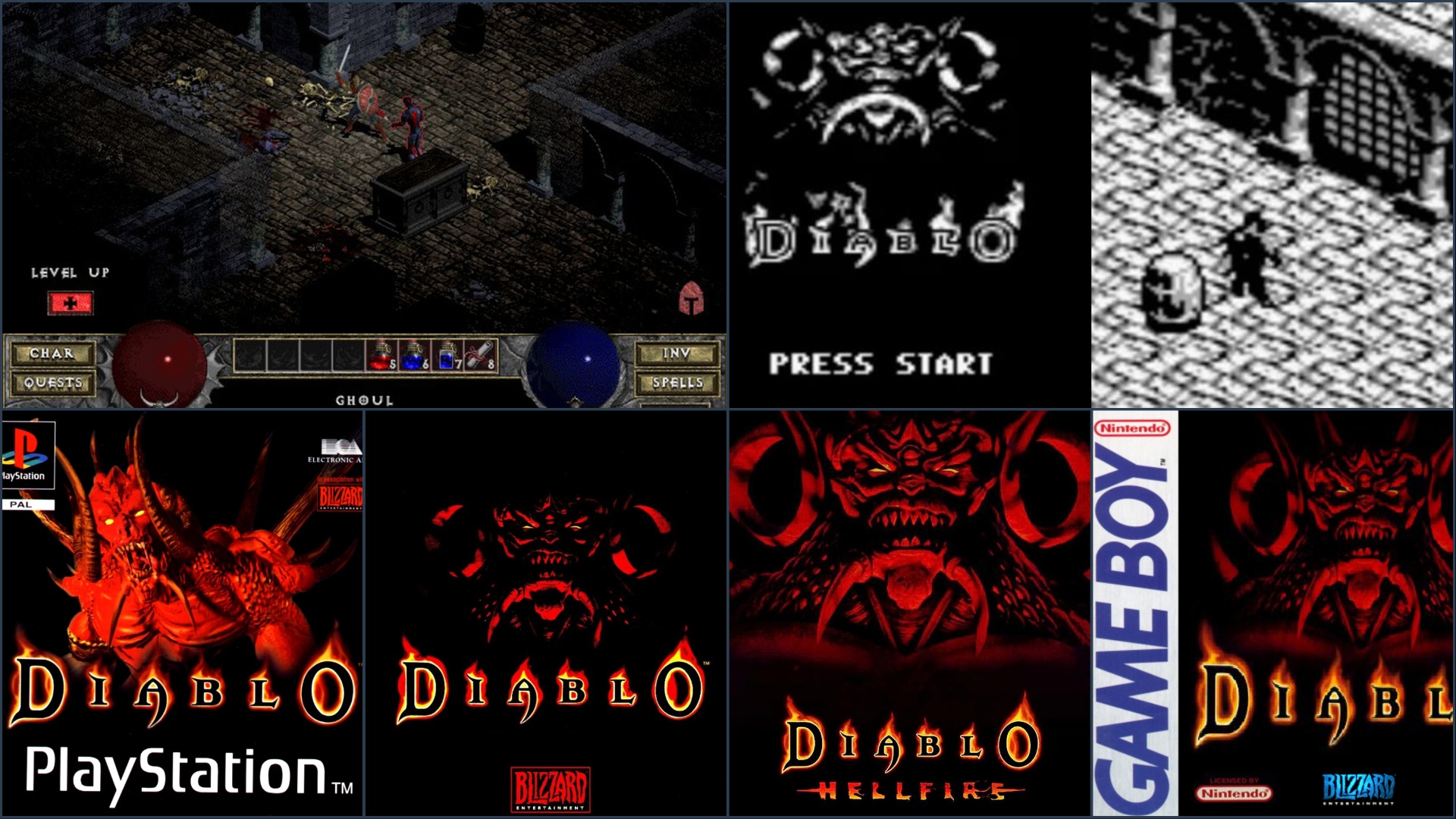
Diablo II and Lord of Destruction
The huge success of the first Diablo game prompted Blizzard to begin work on a sequel right away, and to this day remains the shortest period between the release of two mainline Diablo games. Releasing in June 2000 exclusively for PC and Mac, despite being one of the most beloved entries in the franchise, Diablo 2 didn't see a port to any other platform until 2 decades later. However, it was successful enough to warrant an expansion a year later in 2001 with Lord of Destruction.
Over 21 years later and Blizzard finally decided to give Diablo 2 some console love with the release of Ressurection in September 2021, releasing simultaneously for Windows, Nintendo Switch, Playstation 4, Playstation 5, Xbox One, Xbox Series S and Series X. This version builds new 4K assets and graphics for the game from the ground up, includes all previous content and allow players to switch between the old and new graphics on the fly. Gameplay is left mostly the same (outside of support for controllers) and remains truthful to the original while bringing quality-of-life functionality to help introduce it to a new audience.
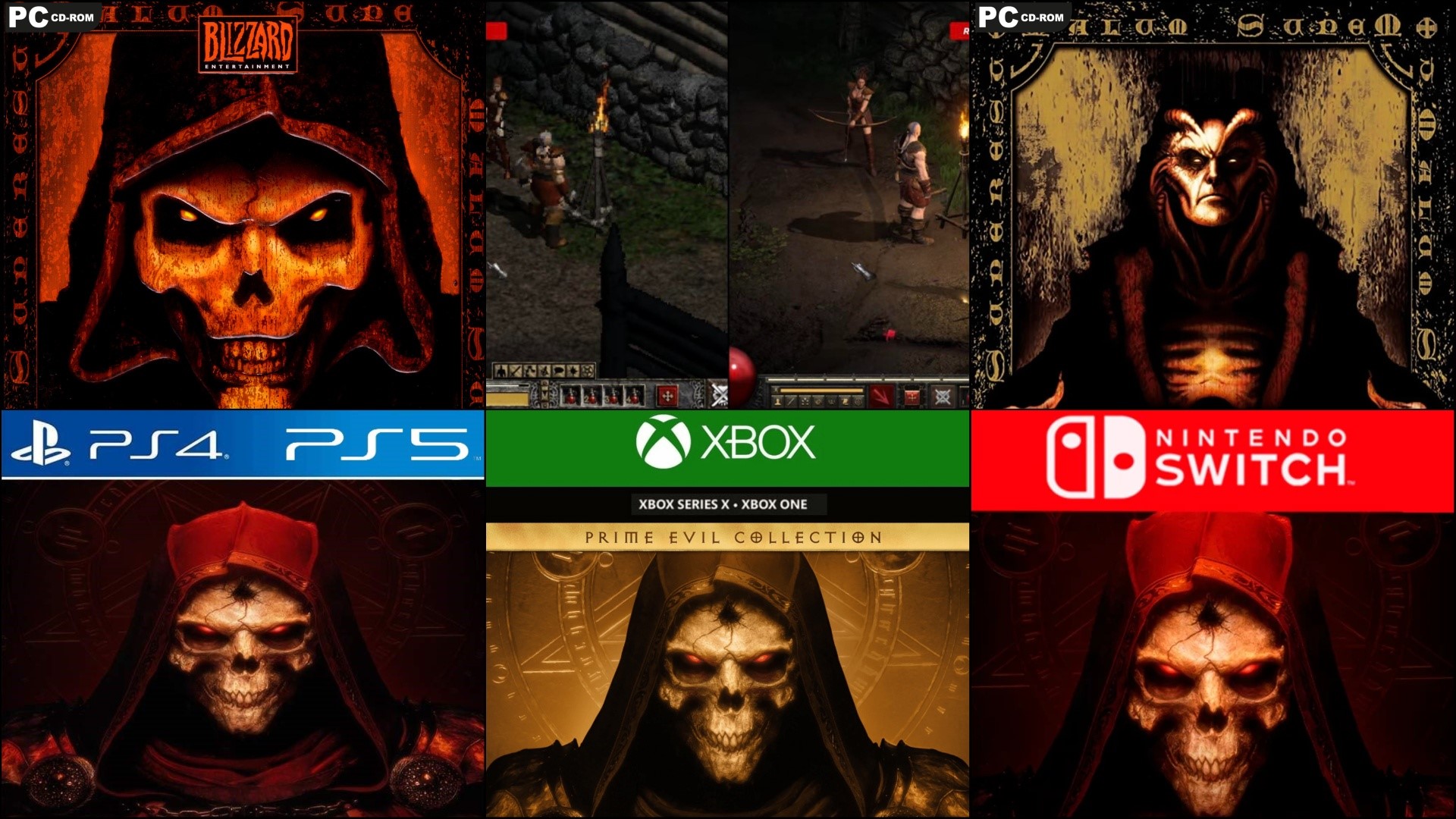
Diablo III and Reaper of Souls
The legacy left behind by Diablo 2 and Lord of Destruction made the excruciating wait for a sequel all the more painful. Over a decade later and Diablo III was finally released to Windows and Mac in May 2012, the game did well enough to receive a large expansion with Reaper of Souls in March 2014 and a huge update alongside the Necromancer class in June 2017. While the third entry was developed primarily for PC, this time the team had console as a serious consideration during production, scoping out different UI and control options. Non-PC gamers by this point were crying out for a console port of what was at this point being reported as the fastest-selling PC game of all time.
Fans would eventually get their wish in September 2013, with an option to purchase the full Diablo III experience on either Xbox 360 or PS3, marking the first time a game from the Diablo series would be released on an Xbox console, these versions proved action RPGs had a solid place on consoles and running at 60 FPS, they played and felt better than most were expecting. This version would feature bespoke controller-based UI and a new rolling mechanic to the game, but a lack of auction house, pre-empting its removal from the PC version nearly a year later. It was also the first time Diablo could be played offline, without an internet connection.
In August 2014, this time developed mostly alongside the PC version, the Reaper of Souls expansion would also release to Xbox 360 and PlayStation 3 as a standalone game, including all of Diablo III. Buyers of the original game could not update their version or purchase the expansion separately, but they could export their saves to the new version. This brought the fifth act and the new Crusader character to consoles and would mark the last major update to Diablo III on seventh-generation consoles. Meaning the 360/PS3 versions of Diablo 3 and Reaper of Souls are relics of their time and present the game as it was during those periods.
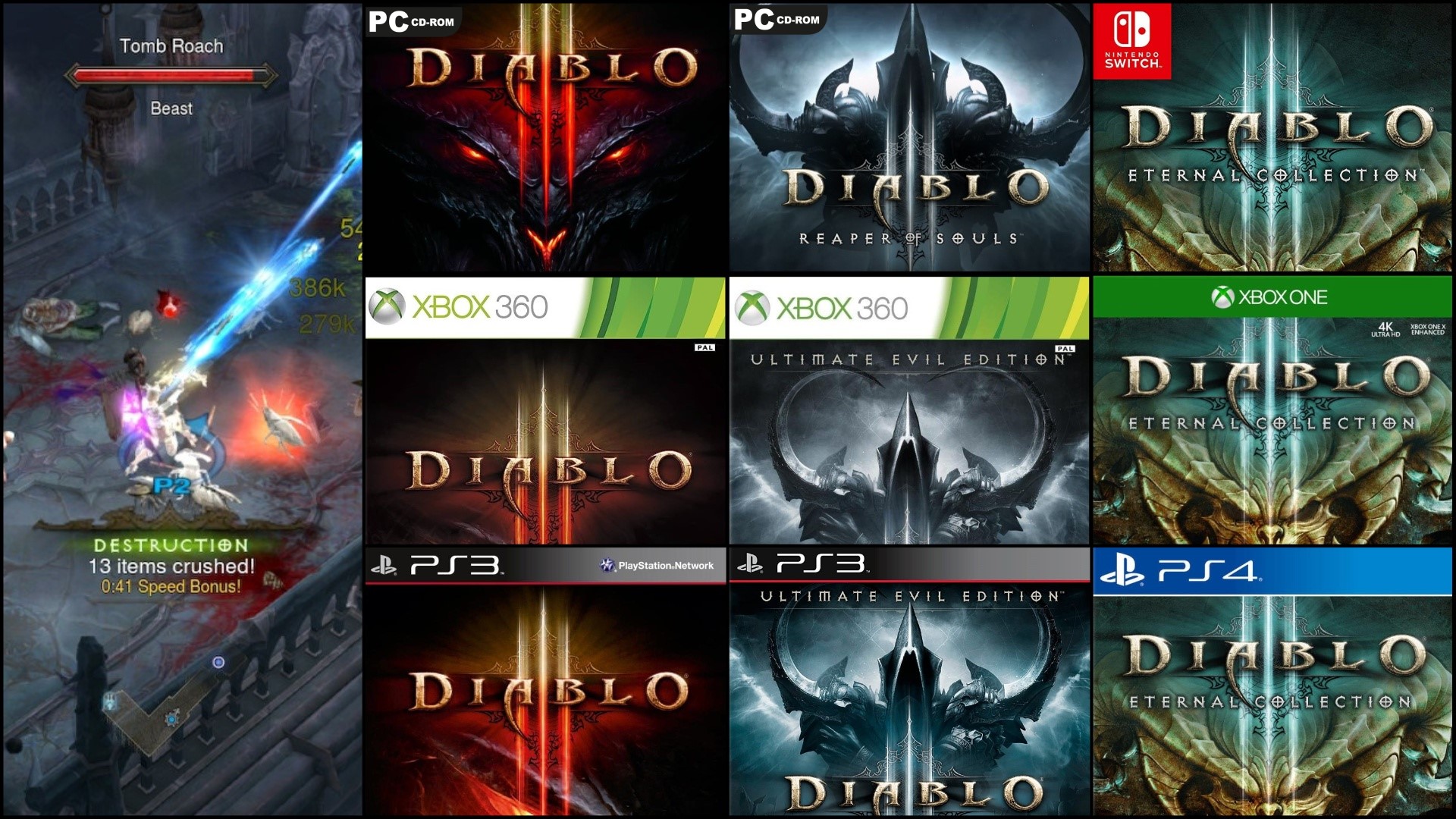
Also in 2014 saw the release of the Ultimate Evil edition of Diablo III (including the base game and expansion) for Xbox One and PlayStation 4 consoles. These again would be new versions of the game that allowed for save exports from as far back as the original Diablo III releases on consoles - meaning Diablo III has three individual sets of achievements / trophies on consoles. June 2017 saw the release of version 2.6 of the game, which included challenge rifts and bounties, alongside a new paid Necromancer class. This was released simultaneously for PC, Mac, Xbox One and PlayStation 4 and was packaged together with the base game and RoS expansion, sold as the 'Eternal Collection'.
For the first time ever on a Nintendo console, Diablo III Eternal Collection was released on the Nintendo Switch in November 2018. The Xbox One and PlayStation 4 versions of Diablo III are backwards compatible with Xbox Series S, Series X and PlayStation 5 - making Diablo III playable on three generations of consoles and therefore the most widely ported title in the Diablo franchise, being playable on eight separate consoles as well as PC and Mac.
Diablo Immortal
While not technically ported to any consoles, there are some features of the mobile spin-off that are worthy of mentioning. First announced (famously) at Blizzcon as a mobile-exclusive game for Android and iOS, Diablo Immortal would later get a beta release to PC during the initial launch of the game in June 2022, and with it would come controller support (for all devices), the first time in the series that Diablo was having controller input considered as a viable method of control on PC.
Despite being made for portable devices with controller input as a point of focus, Diablo Immortal has never seen release to consoles - which seems like a missed opportunity for platforms such as the Nintendo Switch, which feels like a natural fit for the game’s design and scope.
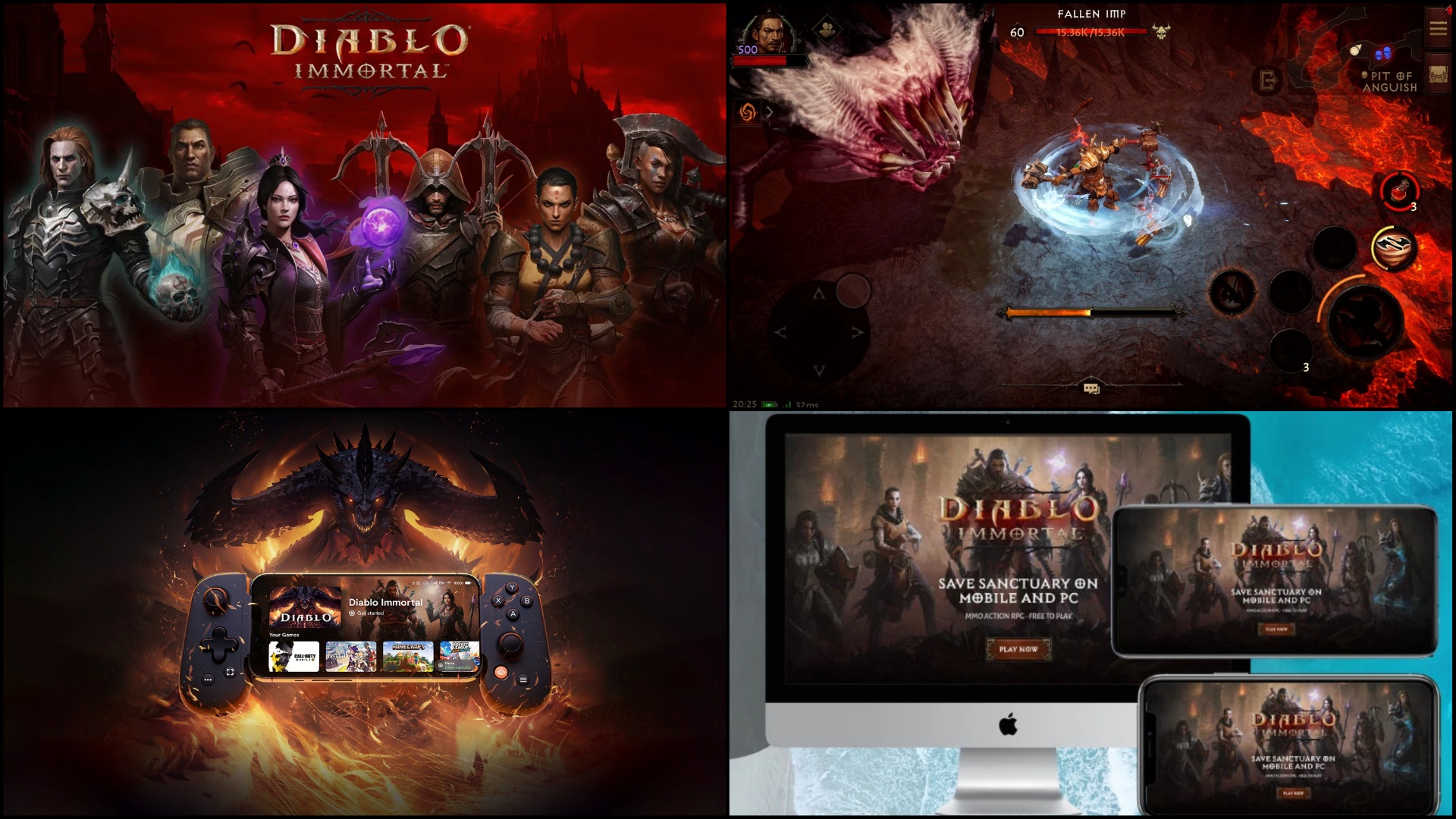
Diablo IV
The final game released simultaneously in June 2023 for Windows, Xbox One, Xbox Series S and Series X, PlayStation 4 and PlayStation 5. This is notable at least for last-generation consoles, as they are now sitting at over a decade of age since release. Diablo IV is the first mainline entry in the Diablo series to release day one on both PC and consoles, with controller support on both platforms right out of the gate. Marking a clear turning point for the franchise, where it is clear that Blizzard see just as much of a future for Diablo on consoles as they do PC, if not more.
Is the Nintendo Switch next in their sights? A device with objectively less power than even last-generation machines from Microsoft and Sony - time will tell. One thing we do know is Diablo has made a home for itself on consoles, and it clearly has no plans of being a one-platform pony.
Diablo IV is the latest and arguably greatest entry in the series to date and has been noted for taking some of the more impressive and praised elements of each game and baking it into the core experience of Diablo IV:
- The dark aesthetic and horror atmosphere of Diablo 1
- The deep and highly custom build options of Diablo 2
- The tight and dopamine-producing combat of Diablo 3
- And the open-world, MMO features of Diablo Immortal
We’re still playing through the game here at Opium Pulses, so we’ll withhold our views and observations about the game for now, but it’s clear Diablo IV has landed the attention of a huge audience and will have an interesting few years of developments and content coming in the next few years, if not decades.
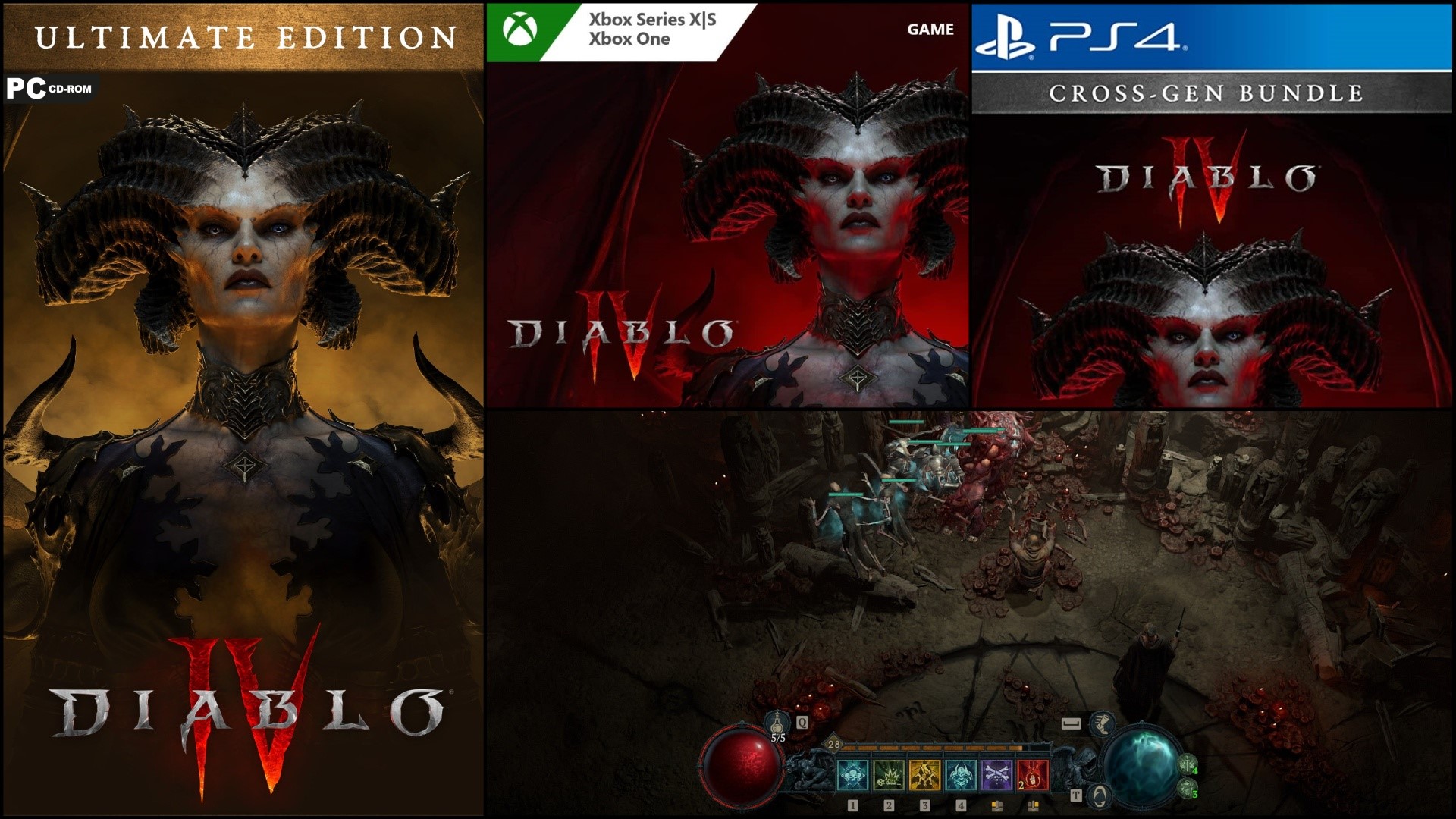
What are your thoughts on Diablo’s console ports? Do you think they belong exclusively on PC? Do you think equal console focus dumbs down the production of high-quality PC experiences?
Or are you on the other side of the fence and enjoy the unique experience Diablo offers to console players? Do you prefer playing the game with a controller? Do you see Diablo as a more casual experiences, more suited to the console player base?
Let us know in the comments below!
See you in hell.


